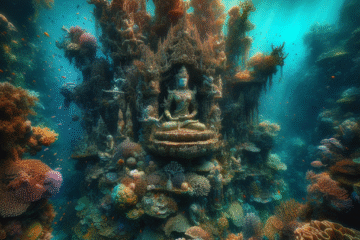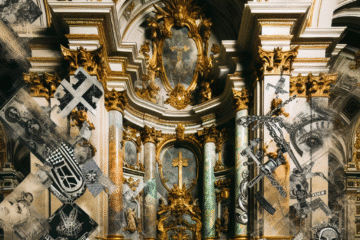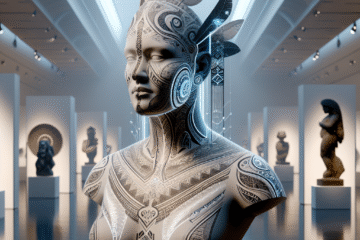
Image title: Hermann von Wedigh III (died 1560)
Medium: Oil and gold on oak
Date: 1532
Source:
The Met Collection
“
With the new day comes new strength and new thoughts.
”
— Eleanor Roosevelt
Posthuman Portraits: AI-Generated Art as the New Self-Portraiture
Introduction: Identity in the Age of Algorithms
For centuries, portraiture has been the artistic domain where humans construct, interrogate, and project their identity. From the realism of Renaissance oil paintings to the psychological explorations of modern photography, self-portraiture has long served as both archive and mirror of the human condition. Today, as we navigate the blurred boundaries between biological and technological consciousness, a new form of portrait emerges—one authored in collaboration with artificial intelligence. These are the posthuman portraits: composite artifacts where identity is no longer singular, fixed, or exclusively human.
Contemporary artists are now engaging AI not merely as a digital brush but as a co-author, challenging the conventions of self-image and authorship in radical ways. This blog explores the evolution of self-portraiture through five major periods of visual art—from the Classical era to our present posthuman moment—framing AI-generated art as the next chapter in humanity’s perpetual quest to see and be seen.
Chapter 1: The Classical Self—Gods, Rulers, and the Idealized Form
In the art of ancient Greece and Rome, portraiture largely served to immortalize power and divinity. Sculptures and frescoes portrayed rulers and deities in idealized forms, exaggerating anatomical perfection as metaphors for virtue and authority. These depictions weren’t about psychological depth or personal expression but about aligning individual identity with cultural ideals of order, rationality, and cosmic harmony. The self was symbol, not subject.
Technology here was material—the chisel, the pigment—but the artistic hand imposed strict stylistic norms grounded in societal values. In this context, the idea of a posthuman portrait would have been inconceivable; identity was fixed, governed by external ideals, not internal flux or algorithmic mutation.
Chapter 2: Renaissance to Romanticism—The Birth of the Introspective Self
By the time of the Renaissance, art began engaging the individual inner world. Artists like Albrecht Dürer and Rembrandt introduced the idea of the self-portrait, using the canvas not just to depict appearance but to explore personal identity and psychological nuance. The Romantic era built on this, casting the artist as a visionary, struggling with inner turmoil—an identity deeply embedded in emotion, genius, and rebellion.
This was the era of the “self” as a singular, expressive entity. The portrait became a site of revelation and vulnerability. Yet still, the artist was central—the sole creator and reflector. The medium was passive: oil, charcoal, marble. The self spoke, but nobody (and nothing) spoke back. Here lies a fundamental contrast with posthuman identity, where AI can respond, suggest, or even contradict the human creator.
Chapter 3: Modernism and the Fragmented Self
With the rise of Modernism in the 20th century, the unified self began to shatter. Cubism, Surrealism, and Abstract Expressionism all engaged the self in more fragmented, conceptual, and subconscious ways. Pablo Picasso deconstructed form; Frida Kahlo infused her self-portraits with emotional, symbolic, and cultural narratives. Artists began questioning whether identity was stable or socially constructed, leading to a skeptical and pluralistic view of the self.
The camera, and later digital media, expanded the possibilities of how identity could be documented and distributed. But still, the idea persisted that a human subject was revealing (even if obscured) a human essence. The artist remained authorial, even as stylistic chaos reigned. The seeds of multiplicity were sown, but the tools had not yet evolved to fully externalize them.
Chapter 4: The Digital Shift—Virtual Selves and Networked Identities
The late 20th and early 21st centuries ushered in digital technologies that changed not only how art is made but how identity is constructed. Social media platforms became performance stages, with avatars, filters, and curated personas casting identity as fluid, editable, and decentralized. Artists like Cindy Sherman had already been exploring the idea of the self as masquerade, but now digital interfaces extended those ideas into everyday experience.
This era laid the groundwork for AI’s arrival in art. The idea of posthumanism—championed by theorists like Donna Haraway and Rosi Braidotti—challenged the primacy of human exceptionalism. The self became multispecies, post-biological, and entwined with data. But while digital tools were powerful, they were still guided by direct human input. AI would change that dynamic, introducing a new creative agent into the mix.
Chapter 5: Posthuman Portraits—Co-Creating with the Machine
In the current era, AI-generated art explores identity not as a self-contained essence but as a diffuse interface between human and machine. Artists like Refik Anadol, Sougwen Chung, and Mario Klingemann create generative portraits using neural networks trained on datasets from facial imagery, medical scans, personal diaries, and internet archives. These works question whether the AI’s “understanding” of the self is any less valid than a traditional portraitist’s interpretation.
AI systems such as GANs (Generative Adversarial Networks) produce images that are both eerily familiar and entirely novel, estranging us from our own image while inviting us to see it anew. The author is now distributed—a blend of artist, algorithm, coder, and dataset. These portraits become relational, emergent, and performative. They suggest that identity is no longer singular, but networked; creation is no longer authored, but assembled.
The philosophical stakes are profound. If an AI can create an image of your inner life you didn’t know existed, who, then, are you? Are we simply data patterns, or is there still an ineffable core? Posthuman portraiture doesn’t offer answers but opens spaces. Spaces where identity is not what we represent, but what we negotiate—between carbon and silicon, self and system, presence and post-processing.
Conclusion: Toward the Future Self
AI-generated portraiture marks not the end of identity, but its radical reconfiguration. As artists continue to collaborate with machines, the boundaries between human and non-human creators will continue to blur, redefining both the nature of art and the nature of selfhood. The posthuman portrait is not a mirror—it’s a searchlight into futures we are still learning to imagine.
This new visual language invites us to let go of the static self and embrace identity as co-authored, contingent, and computational. In the age of intelligent machines, to make a portrait is no longer to reveal the self—but to learn what it could become.

Useful links:


